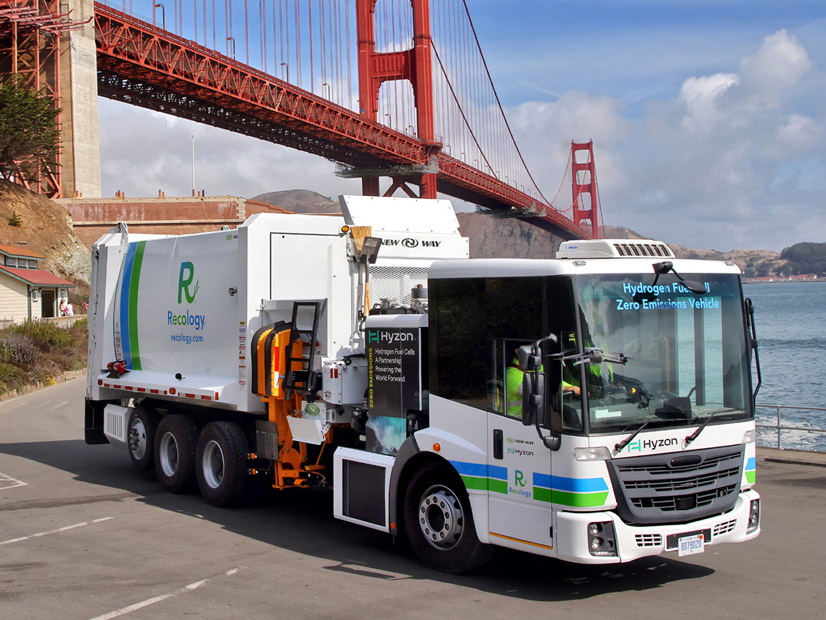
California regulators approved a $35 million package of clean transportation incentives for fiscal 2024/25, a steep drop in funding that is raising concerns about the fate of programs not funded by the package.
The California Air Resources Board approved a funding plan Nov. 21 that divides the money among three programs:
-
- $15 million for the Clean Off-Road Equipment project (CORE), which provides incentives for the purchase of zero-emission off-road equipment such as forklifts and cargo loaders.
-
- $15 million for the Innovative Small e-Fleet (ISEF) project, which offers incentives for medium- and heavy-duty ZEVs for fleets of 20 or fewer vehicles. There’s also funding for “innovative solutions” such as truck sharing.
-
- $5 million for the Zero-Emission Truck Loan pilot project to help fleets buy zero-emission medium- and heavy-duty trucks.
This year’s $35 million in clean transportation funding compares to a $624 million incentive package approved in 2023, a record-breaking $2.6 billion in incentives in 2022 and a $1.5 billion package in 2021.
“This year’s state budget was a challenging one, with reductions across the board to many key state agencies and programs,” CARB Chair Liane Randolph said. “Funding allocations for air quality and climate change programs were unfortunately no different.”
While last year’s incentive packages were funded by a variety of sources, including cap-and-trade dollars and the state general fund, this year’s funding came only from the state’s Air Quality Improvement Fund.
CARB Executive Officer Steven Cliff said the funding package is aimed at small fleets and small businesses and seeks to benefit disadvantaged communities. The CORE and ISEF programs historically have had more demand than available funds, said Cliff, adding that though the funding is less this year, it’s “certainly meaningful.”
Programs Left Out
CARB’s approval of allocations to only three programs means other incentive programs will go without additional funding this fiscal year. That includes the Hybrid and Zero-Emission Truck and Bus Voucher Incentive Project (HVIP), which has helped fund the purchase of more than 14,000 medium- and heavy-duty clean vehicles since it launched in 2009.
As of Nov. 21, the HVIP website said the standard voucher portion of the program was out of money. The program still had funds available in certain set-asides, including those for transit and drayage trucks.
Tim McRae, vice president for public affairs at the California Hydrogen Business Council, said the HVIP funding shortfall comes at a “pivotal point” for the fuel cell electric vehicle industry. New manufacturers and new products are entering the market, giving truck buyers more choices, he said.
“We must have incentives in the next six to eight months to get these platforms off the ground. Otherwise, the whole industry, including customers and end users, will suffer,” McRae said during the CARB board meeting.
In contrast to HVIP, McRae said, the ISEF program has less of a track record, and the CORE program targets vehicles that generally don’t emit as much pollution as the heavy-duty trucks that HVIP targets for replacement.
Among the newly available fuel cell electric vehicles is a zero-emission garbage truck that is being tried out in California. The garbage truck was developed by Hyzon in partnership with New Way Trucks.
In a trial with Mt. Diablo Resource Recovery, the fuel cell trucks demonstrated consistent power over a range of at least 125 miles, including at least 1,300 cart lifts, with greater fuel efficiency than traditional diesel trucks, Hyzon said in an announcement this month.
Nick Barrett with Hyzon said the company was on the verge of closing several large orders for the fuel cell trucks.
“HVIP is absolutely required to complete these sales and get these trucks on the road,” Barrett told the board.
Low-income Programs
The funding shortfall also pits two low-income, zero-emission vehicle incentive programs against each other.
CARB’s Clean Cars for All (CC4A) program has been run for several years by air districts in different parts of the state. More recently, at the direction of the legislature, CARB launched a statewide incentive program for residents living outside of the participating air districts.
CARB announced in September the launch of the statewide program, called the Driving Clean Assistance Program, with $242 million of funding. The program allows low-income participants to scrap their old vehicle in exchange for a grant of up to $12,000 to buy a new or used zero-emission car, motorcycle or e-bike.
Now CARB is struggling to balance the funding needs of DCAP, which brings the low-income ZEV incentive to regions where it previously wasn’t available, and the air district’s CC4A programs, which have a track record of bringing incentives to hard-to-reach populations.
Neither received any funding in the new incentive package. But $14 million recently was shifted from DCAP to the San Joaquin Valley CC4A program.
“Unfortunately, we are basically talking about scraps,” said Randolph, the CARB chair. “We are talking about inadequate funding for getting vehicles to residents that could not otherwise afford cleaner vehicles.”
Randolph said she would work with CARB staff on ways to optimize funding among the DCAP and CC4A programs.


